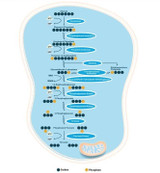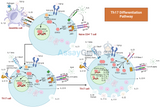How to be a Confident Speaker (Scientific)
Like needles in a haystack, interesting speakers that bring charisma and rock n roll to their talks are hard to come by. No matter what the research interests of the audience, these speakers hypnotize the audience with their funny analogies and the confidence in their data. Leaving the audience inspired to run back to the lab, read more papers, carry on into post-docing or become a PI. Below I discuss how to be a confident speaker.
Preparing scientific talks
For these speakers, research can appear stress-free, with negative data some of their most interesting slides, and when they have no answers for their data, they blame serendipity on how they make some of their greatest discoveries which results in their string of Nature, Science and Cell papers. One of the most entertaining and great scientists I have been lucky enough to hear on two occasions is Doug Green. Recently at the NCRI in Liverpool, Doug gave a talk about his current research, not the Nature papers he has just published, but research that is still causing him confusion. Unlike most speakers, Doug decided to begin his talk about his tales of traveling Liverpool and the Beatles tour, rather than running through the sometimes mundane overview of the research area which by 5 pm has probably been delivered 10 times previously that day. This introduction by Doug reinvigorated the audience, cleared their mind of bad Western blots and made them sit back up in their chairs.
Confidence in science presentations
To have this confidence in your data takes years of experience and knowledge of your field. It also helps when you are one of the most cited authors, but this doesn’t always have to be the case. Confidence in your data stems from knowing you have read the right papers, carried out the right experiments and included the right positive and negative controls. Beyond this, no one can question your data. Also showing both your positive and negative data can make for an entertaining talk and show the audience that you are human after all and not just some positive data producing robot.
Presenting your data at scientific conferences
Letting your audience know where you got it wrong, how you thought further about the problem and then how you came to your conclusion can also make it entertaining for the audience, and lets them know that you analyse and question your own data.
Diverting the attention of the audience and giving them cute pictures is a technique known as Kawaii, which has been shown to trigger positive emotions. This also might explain why the internet is littered with cats. At a recent talk, Vishva Dixit discussed about when he faced a difficult problem, he would go out for a walk and talk with his friend, which turned out to be his dog! Instantly reengaging the audience and letting them identify with his problems.
Although it might take years, and showing more negative data then positive, becoming a good speaker can be just as important as becoming a good scientist, cause if no one listens to what you say, how can you make a difference?
Recent Posts
-
Biological Role of GLP-1
Glucagon-like peptide-1 (GLP-1) is a critical hormone in the regulation of glucose met …20th Jun 2024 -
Th17 Cell Differentiation: Insights into Immunological Dynamics
Th17 cells, a subset of T helper cells characterized by their production of interleukin-17 (IL- …25th May 2024 -
Assay Genie New Asian Distributor May 2024
Dublin, Ireland — May 20th 2024 — Assay Genie, a leading supplier of ELISA Kits, Ant …19th May 2024




